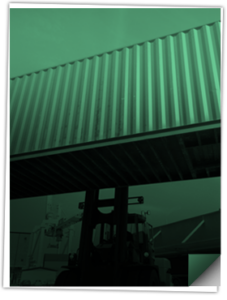Featured Headlines:
Changes Pending for de Minimis Rule
US Prescribes Cambodia as Proscribed
More is More for Less Than Trailerload
MV Rome Makes Detour to the Mexican Seashore
Keep Calm And Carry On Profiting
Air Export Rates Out of China at Record Highs
Changes Pending for de Minimis Rule
- House Ways and Means Trade Subcommittee Chairman Earl Blumenauer, D-Oregon, is going to propose major changes to the de minimis rule.
- The de minimis threshold is currently set at $800 (Section 321), and the use of this provision increased substantially as e-commerce rose during the pandemic.
- Currently, 83% of packages taking advantage of de minimis come from China; there are concerns that Chinese companies are using the de minimis rule to evade US trade laws such as forced labor, intellectual property rights, and counterfeit goods detection.
CBP Refund Process is No Fun
- Currently, CBP replacement checks take 6 to 9 months to process on average.
- The lengthy process is partly due to the fact that the revenue department cannot track a check independently; they must file a Freedom of Information Act (FOIA) request to obtain that information.
- To help speed up the process, importers should remember to verify that their correct address is on record with CBP.
US Prescribes Cambodia as Proscribed
- The Department of State is amending the International Traffic in Arms Regulations (ITAR) to add Cambodia to its list of proscribed countries.
- As such, the US will deny licenses and other approvals for exports and imports of defense articles and/or services destined for or originating in Cambodia, except as otherwise provided.
- The rule went into effect on December 9.
More is More for Less Than Trailerload
- Riding the more than $600B American eCommerce wave, Less Than Containerload (LTL) trucking is estimated to have grown by 20-25% in 2021 nationwide.
- Major LTL carriers are re-engineering their networks through expansions, mergers, acquisitions as they move closer to the “consumer ecosystems.”
- There are 1.5 million active sellers on Amazon today, according to Marketplace Pulse, and the majority use Fulfillment by Amazon (FBA) to commercialize their products, which in most cases are in LTL quantities.
- LTL and FTL trucking are also considerably more popular than drayage among truck drivers since port and rail ramp congestion limits driver turns and thus their income.
Time to Pray for Your Dray
- Widespread equipment challenges and labor shortages are reducing hopes for new drayage capacity as demand is expected to remain extremely strong in the first half of 2022.
- Missing wheels within missing wheels: Truck manufacturers are struggling to get new trucks to the market as they manage amid parts shortages thanks to global supply chain delays. Class 8 truck and tractors completed orders dropped a truly alarming 82% in Nov 2021 vs 2020.
SoCal Makes New Queue Debut
- Last week, the ports of Los Angeles and Long Beach (LA/LBG) reached an all-time-high of 96 ships at anchor; there were also 31 container ships at terminal berths, bringing the grand total to an all-time high of 127.
- Although only 40 container ships were waiting within 40 miles of the ports, another 56 sat outside of a specially designated Safety and Air Quality Area (SAQA)—put in place in Mid-November— that extends 150 miles to the west of the ports and 50 miles to the north and south.
- The new queuing system replaces the previous first-come, first-served policy; it reserves a ship’s spot in line based on its calculated time of arrival (CTA), which is derived from when a ship would have hypothetically arrived from its last port of call.
- According to officials, the change was made in an effort to improve air quality and overall safety, not to reduce the volume of ships waiting in the queue.
Saving the Port of Savannah
- Since September, the Georgia Port Authority (GPA) has cut the number of vessels anchored outside the Port of Savannah by nearly 50%, as import dwells decreased, and drayage efficiency increased.
- As of Friday, there were still 2,300 containers that have been sitting for more than 3 weeks at the Garden City Terminal
- GPA has also opened up 4 pop-up storage lots to help clear backlogs— in Savannah at Norfolk Southern’s Dillard Yard, in northwest Georgia at a terminal adjacent to the Appalachian Regional Port (ARP), northwest of Savannah at Statesboro Airport, and in southeastern Atlanta at CSX’s Hulsey Yard.
MV Rome Makes Detour to the Mexican Seashore
- On Monday, the MV Rome Express, a container ship owned by Hapag-Lloyd, was diverted to Ensenada, Mexico after 5 crew members tested positive for COVID; the vessel was en route to Busan, South Korea after departing Cartagena, Colombia.
- The MV Rome is now underway again after evacuating 3 its crew to Mexico; the remaining 2 affected crew members are in quarantine aboard the ship.
- The German carrier notified customers that cargo may be delayed.
Keep Calm And Carry On Profiting
- Three quarters into 2021, Maersk’s year-to-date revenue stands at $43 billion with pre-tax earnings at $16.6 billion and growing.
- According to Sea Intelligence, Inc, the combined operating profit of steamship lines hit $37.24B in Q3 2021; this number eclipses the combined profits of all carriers from 2010-2020.
Air Export Rates Out of China at Record Highs
- The average air export rates from all major Chinese gateway airports (Shanghai, Hong Kong, Shenzhen) sit between $17 and $20 per kilo with no expectation of diminishment until Chinese New Year; these are the highest sustained rate levels on record.
- Airfreight volume out of Asia is 22.3% higher year-on-year with spikes of over 50% for electronics, medical supplies, and e-commerce goods.
- Global air capacity is down 7.2% due to the continuing reduction in passenger flights.
- Global airfreight volume is up 9.4%; this combined with lower capacity has allowed airlines to establish and maintain the highest average air rates globally in history.



